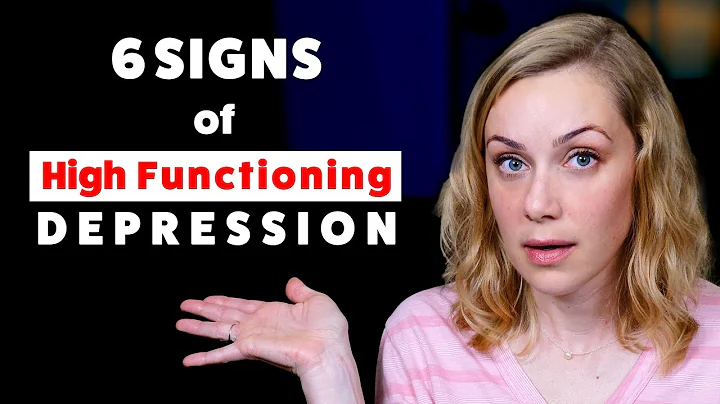The book shared today is "Why don't you start yet? Thinking Like a Psychologist》 Author: Dr. Anne Rooney

A very good book on psychology, which is excerpted from it.
Maslow demand pyramid is long outdated?
Maslow demand pyramid expanded to 7 or even 8 levels in the 1960s and 1970s. The newly added level is the need for cognitive and aesthetics, located at the lower level of self-realization, and the need for "transcending oneself" (very in line with the thoughts of the 1960s). Cognitive needs are the demand for knowledge and meaning; aesthetic needs include the appreciation of beauty's appearance, beauty form and balanced beauty; transcending oneself means turning attention from oneself to others, to the world, and focusing on others' self-realization.
American psychologist Clayton Alder fer made slight improvements based on the Maslow demand pyramid theory, and divided needs into survival needs, interpersonal needs and growth needs.
Alderfer believes that the lowest level of Maslow's theory can be summarized as "survival needs"; he classifies those needs related to social status and relationships with others as "interpersonal needs"; and calls the need for self-esteem and self-realization "growth needs".
The harm of "grading" the demand: If a person's higher-level needs are not met, he will slide down the "ladder" and continue to redouble his efforts on lower-level needs to meet higher-level needs.
In fact, attempts to meet spiritual needs through material things are doomed to lead to failure.
There is no distinction between demands and demands
Chile-born German economist and environmentalist Manfred Max-Neef proposed a classification of human needs, which he believes are interrelated and interdependent. He divided human needs into the following categories:
·Survival·Protection·Emotion·Comprehension·Association·Entertainment·Creation·Identity·Identity·Freed·Hardware·Manfred Max-Neff classified them into four categories: being (attributes), possession (things), doing things (behavior) and interacting (environment), and listed a matrix table composed of 36 cells.
These basic human needs do not need to be met in any specific order, and while some needs are met, other needs will be met accordingly.
The influence of appearance
People with outstanding appearance have advantages in many aspects than people with ordinary appearance: they are more likely to find a job and are more likely to be helped. A good-looking person earns 10%-15% more money in his life than a normal-looking person. Daniel Hamermesh of the University of Texas calculated that for people whose appearance is less than average, a lifetime amounts to a loss of about $140,000 (£89,000) in income.
Is daydreaming a waste of time?

Teachers hope that students will not daydream because they need students to focus on the short-term goals of the immediate course. But research evidence also shows that daydreaming can make children happier and more creative in the long run.
Singh summarizes 3 different types of daydreams:
·Active creative daydream is a fun, vivid, and casual fantasy. This type of daydream helps to cultivate creativity
·Guilty-anxiety daydream involves potentially painful feelings such as anxiety or fear. It may include imaginative experiences such as heroism, failure, aggression and ambition, as well as compulsive re-experience of past trauma caused by post-traumatic stress disorder (PTSD)
·Dispersed daydream is a daydream caused by inability to concentrate, and is characterized by anxiety caused by trying to concentrate but unable to do it.It is the ancient "noon demon"
Research on "actively creative daydream", Singh and later Skuller discovered that daydream has the following broad functions:
It helps to make plans, allowing us to imagine and plan what we want to do in the future. Daydreams allow us to preview future events by imagining different results.
It helps us solve problems and stimulate creativity.
It helps us achieve the "attention cycle", which is the switching between focusing and focusing on external information flow, thus establishing a more meaningful and comprehensive approach to achieving personal or external goals.
It achieves "de-habitization" by decomposing tasks or concentration. This allows us to practice more time-scattered exercises, and research finds that this form of learning is better. This is why four and a half hours of review before the exam is more effective than two hours of continuous review.
It helps us develop compassion, a sense of morality, the ability to understand other people's opinions and emotions, and the ability to summarize meaning from past events and experiences.
Daydream can also provide a safety valve. We can daydream and imagine ourselves reacting aggressively to a given situation to relieve the tension and feeling of collapse in our hearts, allowing us to give a more steady response in reality.
Positive and constructive daydreaming is good for personal growth and satisfaction, and daydreaming is good for our inner self.
How can I become the best self?

How can we become the best selves and make the best use of these short decades of life?
Just do a good job of self-realization. He helps you realize your potential, be clear about your will, and become the best self in your heart.
Maslow discovered the following common traits in the self-realizers he studied:
- They have a more realistic view of themselves and others, accept people's original appearance, can tolerate defects,
- They are flexible and independent, can judge the situation clearly, candidly and objectively, that is, they are not easily deceived, consciously and spontaneously have strong consciousness,
- like to be independent, do not blindly follow established norms and conventions
- can tolerate uncertainty
- requires private space and time of their own
- is very creative
- will focus on tasks or problems outside of themselves html
- will focus on tasks or problems outside of themselves html
- 11
- They have a unique sense of humor, and are not based on the pain of others
- Use strict moral standards to demand themselves
- Have awe and curiosity about the world, appreciate this world
- Have several close friends who are deeply in love and satisfying, instead of making friends without deep friendships
- care about human well-being
- has had a "peak experience"
Take the first step
Not all self-realization steps are difficult. There are some steps that only require you to get out of your comfort zone and do not require you to completely change it, which can help you build a " muscle memory " that pursues self-realization. The easiest first step towards self-realization is to work hard and be confident no matter what you do.
More important step
The most important principle is honest. This sounds easier said than done, because it means you have to act according to your true feelings and beliefs.
Self-realization requires you to face yourself honestly. As long as you follow your inner self, it will become more acceptable; if you are still fighting it, you have made the wrong choice.
Maybe what you like will be looked down upon by others, but so what?
Whatever you want to do and like, just follow your heart and don’t care about other people’s likes and dislikes.Of course, this does not mean that you should completely ignore other people's opinions and always turn a blind eye to other people's suggestions. It is important to evaluate what you see and hear based on your own experience and likes and dislikes, and make your own choices - those that will make you happy and satisfy.
The most difficult step in self-realization is to firmly stand firm when your pursuit is different from the pursuit and beliefs of those around you. All of this requires courage to stick to your own beliefs, fight the wave of public opinion, and face hostility. You may suffer from sticking to your beliefs, but for self-realization, it is all worth it, because a firm and upright heart will be your greatest wealth in life.
No one can help you realize yourself, and no one can tell you what kind of person you should become. self-realization can only be achieved by yourself.
Why don’t you start yet?

A common misconception is that procrastination is the product of perfectionism - we delay starting something because we are worried that we can't do it well. In fact, we are postponing or deliberately sabotaging tasks to avoid disappointment or frustration.
research shows that in fact this has nothing to do with perfectionism. Even if there is, perfectionists will not delay than non-perfectionists.
alternative activity
"Replacement activity" refers to when you plan to do one thing, but do something else. Like humans, animals engage in alternative activities when they cannot choose between two actions, or when the action they strongly want to perform is blocked. Some birds start pecking at the grass when they meet competitors: because they cannot decide whether to fight or run away, in this case they will do something completely meaningless.
Sometimes we scratch our heads when trying to make a decision, which is also an alternative activity. Some people chew their hair, twisted with their hands, and fiddled with pens when they are under pressure or are entangled with a decision or problem. These are all alternative activities.
On the contrary, procrastination is highly related to responsibility. And strangely, it is only highly correlated with "night owls" and not highly correlated with " early bird ".
Research shows that people who go to bed early and wake up early (early birds) are less likely to delay. They did more work, so they were likely richer and certainly wiser when it comes to time planning. They may also be mentally healthier because procrastinators generally suffer higher stress and anxiety than non-procrastinators.
Kyle Simpson of Carlton University, Ottawa, Canada, found that stimulus seeking is not related to the degree of procrastination. The truth is that people seem to tell themselves that they procrastinate because they are able to work better under pressure and enjoy the feeling of rush. But in fact, this is just an excuse for your lack of action. When we only complete a task at the last minute, few people will be glad that they started so late. Many people will regret their procrastination and think that if they are given more time, they can do better.
procrastination is found to be associated with impaired prefrontal cortex or low activity. This area of the brain plays an important role in planning, controlling impulses and filtering disturbing stimuli from other parts of the brain.
Most of us have no damage or inactive prefrontal cortex, so we can't use it as an excuse for procrastination. Many are “short termists” who postpone a challenging, boring or long task and instead do something that pays off immediately, even if it has low long term value or has little or no long term value. Most people procrastinate just because we are lazy, lack willpower, and have no motivation. This is difficult to admit, because if we admit it, it means we need to solve these problems, but we are really too lazy to solve them.











